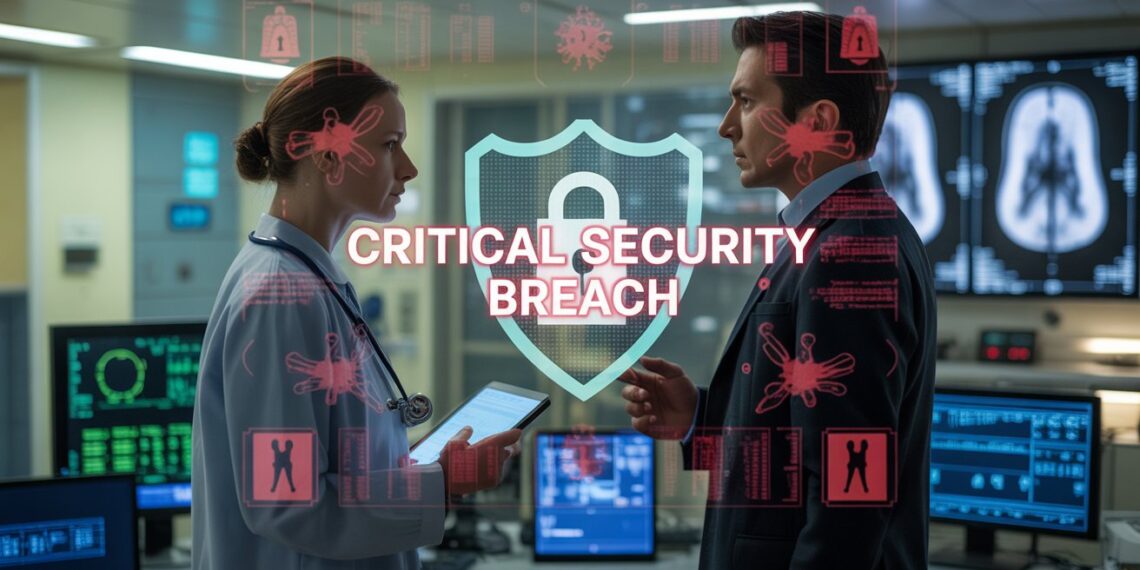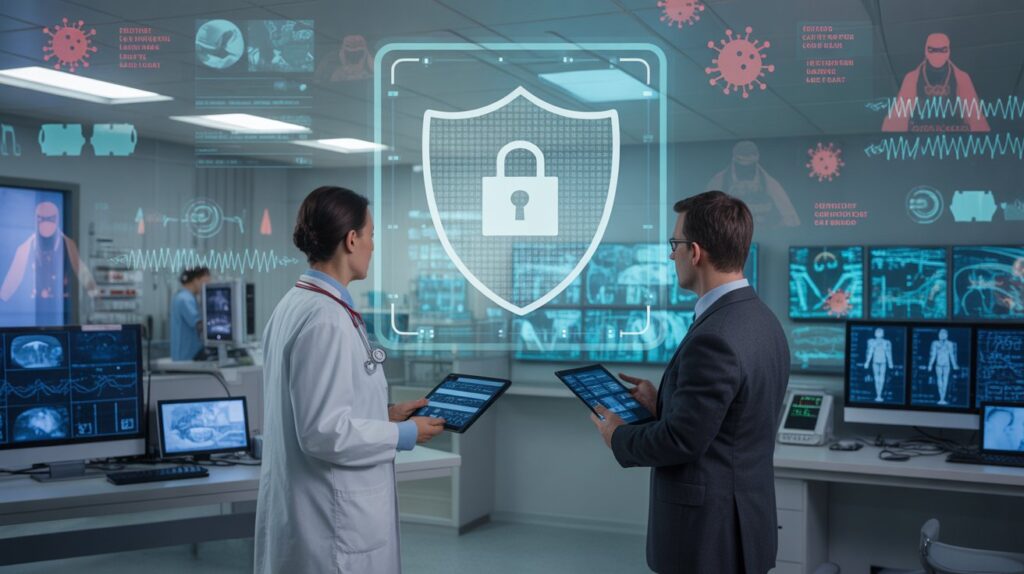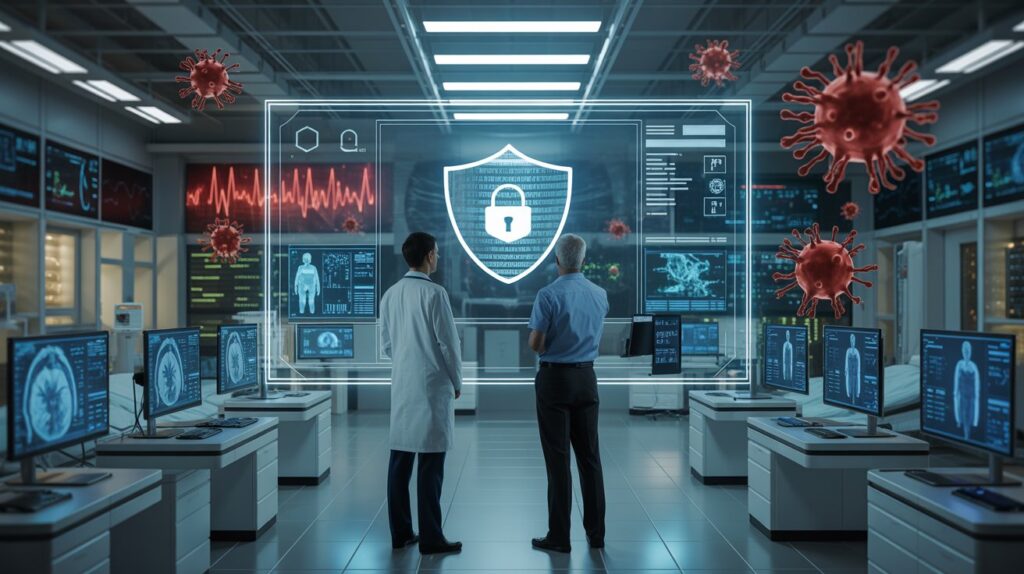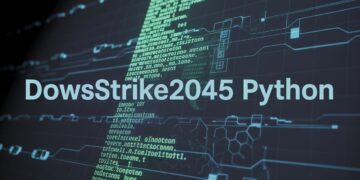Healthcare organizations are at the center of one of the most complex cybersecurity battles of our time. With the rise of digital health records, interconnected devices, and telemedicine platforms, the industry is experiencing unprecedented growth in data usage. At the same time, it has become a prime target for cybercriminals. The stakes are higher than in almost any other industry: a cyberattack can compromise patient privacy, disrupt hospital operations, and even endanger lives. This article explores the Cybersecurity Challenges in Healthcare IT, highlights the evolving threat landscape, and provides practical solutions for healthcare leaders to strengthen their security posture.
Why Healthcare IT is a Prime Target
1. High Value of Healthcare Data
Unlike financial data, which can often be canceled or reissued, healthcare records are permanent. They contain personally identifiable information (PII), insurance details, and even sensitive medical histories. On the black market, health records can sell for significantly more than stolen credit card information.
2. Regulatory Environment
Laws such as the Health Insurance Portability and Accountability Act (HIPAA) in the United States and the General Data Protection Regulation (GDPR) in Europe impose strict requirements for securing patient data. Non-compliance can result in substantial fines and reputational damage.
3. Complex IT Ecosystem
Healthcare IT systems include electronic health records (EHRs), imaging systems, laboratory databases, and medical IoT devices. These systems are often supplied by multiple vendors, making them difficult to secure consistently.
The Current Cybersecurity Threat Landscape
Ransomware Attacks
Ransomware is one of the most significant threats in healthcare. Attackers encrypt critical hospital systems and demand payment in exchange for restoring access. Such attacks can shut down emergency services, delay surgeries, and place patients at risk.
Phishing and Social Engineering
Healthcare staff often face phishing attempts through email or SMS. By tricking employees into clicking malicious links or disclosing credentials, attackers can gain entry into sensitive systems.
Insider Threats
Not all threats come from external actors. Disgruntled employees, careless staff, or contractors with too much access can inadvertently or intentionally cause data breaches.
Vulnerabilities in Medical Devices
Medical IoT devices, such as infusion pumps and imaging machines, are increasingly network-connected. Many run outdated operating systems or lack regular patches, creating exploitable vulnerabilities.
Supply Chain Attacks
Third-party vendors often have access to healthcare IT systems. A breach in one vendor can cascade into a broader compromise across multiple facilities.
Key Cybersecurity Challenges in Healthcare IT
Legacy Systems and Lack of Updates
Many healthcare institutions still rely on outdated systems that cannot support modern security updates. This creates a significant attack surface for cybercriminals.
Budget Constraints
Healthcare budgets often prioritize patient care over IT infrastructure. Security teams must operate with limited resources while defending against increasingly sophisticated threats.
Shortage of Skilled Professionals
The cybersecurity skills gap is global, and healthcare organizations often struggle to attract and retain experienced IT security professionals.
Data Sharing and Interoperability
Healthcare relies on data sharing between providers, insurers, and researchers. While interoperability improves patient care, it also increases the number of access points that must be secured.
Balancing Accessibility and Security
Doctors, nurses, and emergency staff need quick access to patient data. Overly restrictive security protocols can slow down operations, making it challenging to balance accessibility with protection.
Emerging Risks in Healthcare Cybersecurity
Telemedicine and Remote Care
The pandemic accelerated telemedicine adoption, but many platforms were rolled out quickly without robust security testing. Remote consultations and home monitoring devices present new risks.
Cloud Vulnerabilities
While cloud computing offers scalability and cost savings, misconfigured cloud environments can expose sensitive data. Attackers increasingly target healthcare organizations migrating to cloud platforms.
Artificial Intelligence (AI) Risks
Healthcare IT is adopting AI for diagnostics and predictive analytics. However, adversarial attacks on AI models can manipulate outputs, leading to dangerous consequences.
Supply Chain and Firmware Exploits
Compromised software updates or firmware in medical devices can introduce hidden vulnerabilities into critical hospital systems.
Regulatory and Compliance Considerations
HIPAA and HITECH (United States)
These frameworks require healthcare organizations to implement administrative, physical, and technical safeguards to protect patient data. Non-compliance can result in fines and corrective action plans.
GDPR (Europe)
Under GDPR, healthcare organizations must secure personal health data with strict data processing and consent requirements. Penalties for violations are significant.
Other Global Regulations
Countries such as Canada, Australia, and India are implementing healthcare-specific data protection laws. Multinational providers must stay updated on regional requirements.
Compliance vs. True Security
Meeting compliance requirements does not guarantee security. Organizations must go beyond checklists to build a resilient, risk-based approach to cybersecurity.
Best Practices to Mitigate Cybersecurity Challenges
Implement a Zero Trust Framework
Zero Trust assumes no user or device should be trusted by default. Every request must be authenticated and verified, minimizing insider and external risks.
Network Segmentation
Separating medical devices, EHR systems, and administrative networks limits the spread of attacks if one system is compromised.
Regular Risk Assessments
Routine security assessments help identify vulnerabilities before attackers exploit them. Penetration testing and vulnerability scanning should be standard practice.
Vendor Risk Management
Healthcare organizations should evaluate vendors’ security practices, enforce contractual security obligations, and conduct regular audits.
Backup and Recovery Planning
Robust data backup strategies, combined with tested recovery plans, ensure that organizations can continue operations even after a ransomware attack.
Continuous Training and Awareness
Human error remains a leading cause of breaches. Regular training programs and phishing simulations equip staff to recognize and resist threats.
Case Studies: Real-World Lessons
Case Study 1: Ransomware Attack on a Hospital Network
In 2021, a European hospital faced a ransomware attack that disrupted emergency care services. The breach highlighted the importance of segmented networks and updated backup strategies.
Case Study 2: Insider Threat Leading to Data Theft
A U.S. healthcare employee improperly accessed patient records for financial gain. This case underlines the need for strict access controls and user activity monitoring.
Case Study 3: IoT Device Exploitation
Researchers demonstrated how vulnerabilities in connected infusion pumps could be exploited to alter medication dosages. This illustrates the critical importance of medical device security testing.
Tools and Frameworks for Healthcare Security
- NIST Cybersecurity Framework (CSF): Offers guidelines for identifying, protecting, detecting, responding to, and recovering from cyber incidents.
- Health Industry Cybersecurity Practices (HICP): U.S.-specific guidance for addressing the most pressing healthcare cybersecurity threats.
- ISO/IEC 27001: International standard for information security management systems.
- Security Information and Event Management (SIEM): Tools that centralize security logs and enable real-time monitoring.
Future Trends in Healthcare Cybersecurity
- AI-Driven Defense: Machine learning models will help detect anomalies and predict threats before they escalate.
- Quantum-Resistant Cryptography: As quantum computing evolves, healthcare organizations will need encryption methods resistant to quantum attacks.
- Greater Regulatory Scrutiny: Governments are expected to increase oversight of healthcare cybersecurity, introducing stricter standards.
- Patient-Centric Security Models: Patients will have more control over how their data is stored, shared, and secured.
Frequently Asked Questions (FAQs)
Why is healthcare such a big target for cybercriminals?
Healthcare records contain permanent and valuable information, making them more lucrative than financial data on the black market.
How do ransomware attacks affect hospitals?
Ransomware can disrupt operations, delay patient care, and result in financial losses. In severe cases, it may directly impact patient safety.
Are medical devices really at risk?
Yes. Many connected devices run outdated software and are vulnerable to exploitation. Securing them requires regular patching, network segmentation, and lifecycle management.
What role does regulation play in cybersecurity?
Regulations establish minimum standards, but compliance alone is not enough. True security requires proactive risk management and continuous monitoring.
How can smaller healthcare providers protect themselves?
Smaller providers can adopt affordable strategies such as employee training, strong password policies, vendor vetting, and leveraging cloud solutions with built-in security features.
Conclusion
The Cybersecurity Challenges in Healthcare IT will continue to evolve as digital transformation accelerates in the medical sector. While the risks are significant, they are not insurmountable. By combining regulatory compliance with proactive risk management, healthcare organizations can safeguard patient trust, ensure operational continuity, and protect sensitive data from malicious actors. The path forward requires commitment, collaboration, and continuous vigilance — but the rewards are nothing less than the preservation of patient safety and the integrity of modern healthcare.












